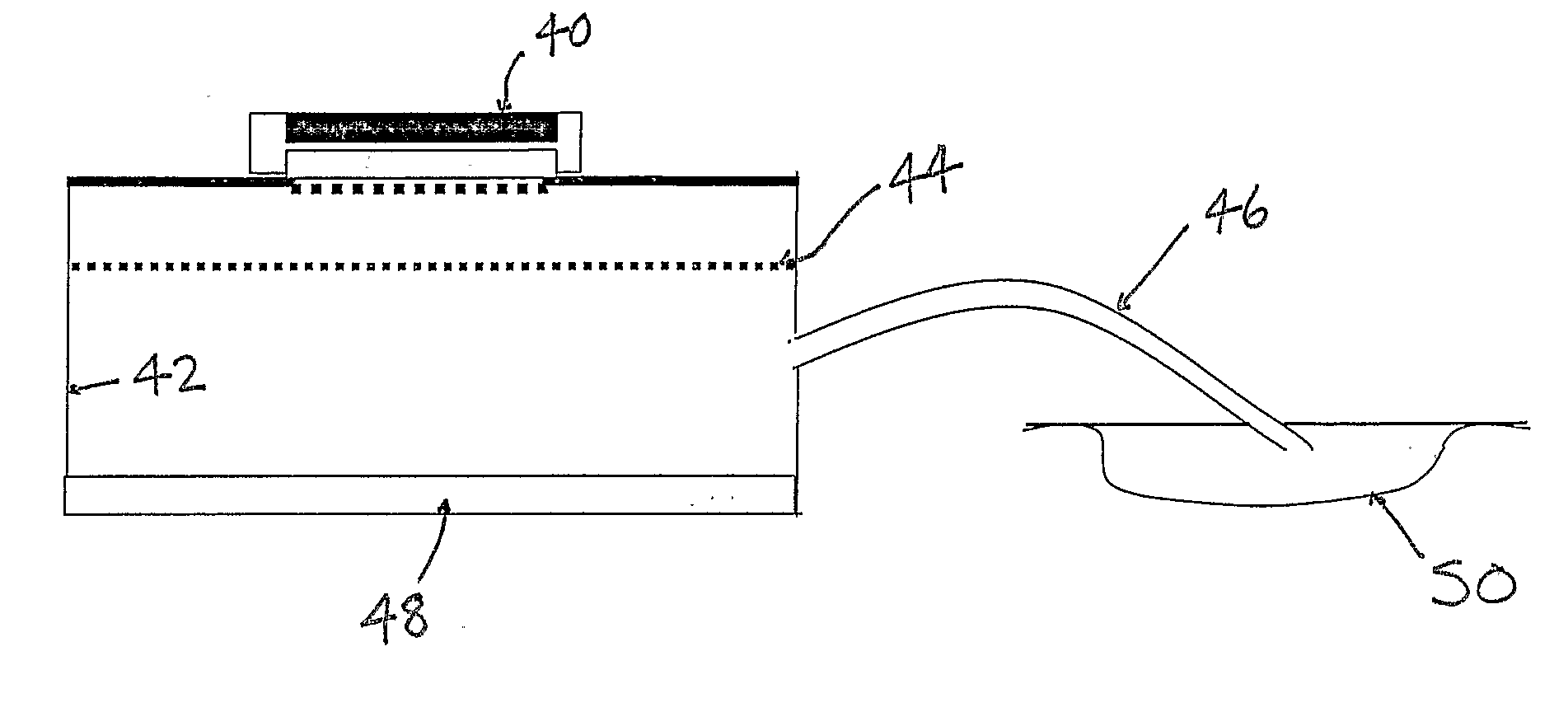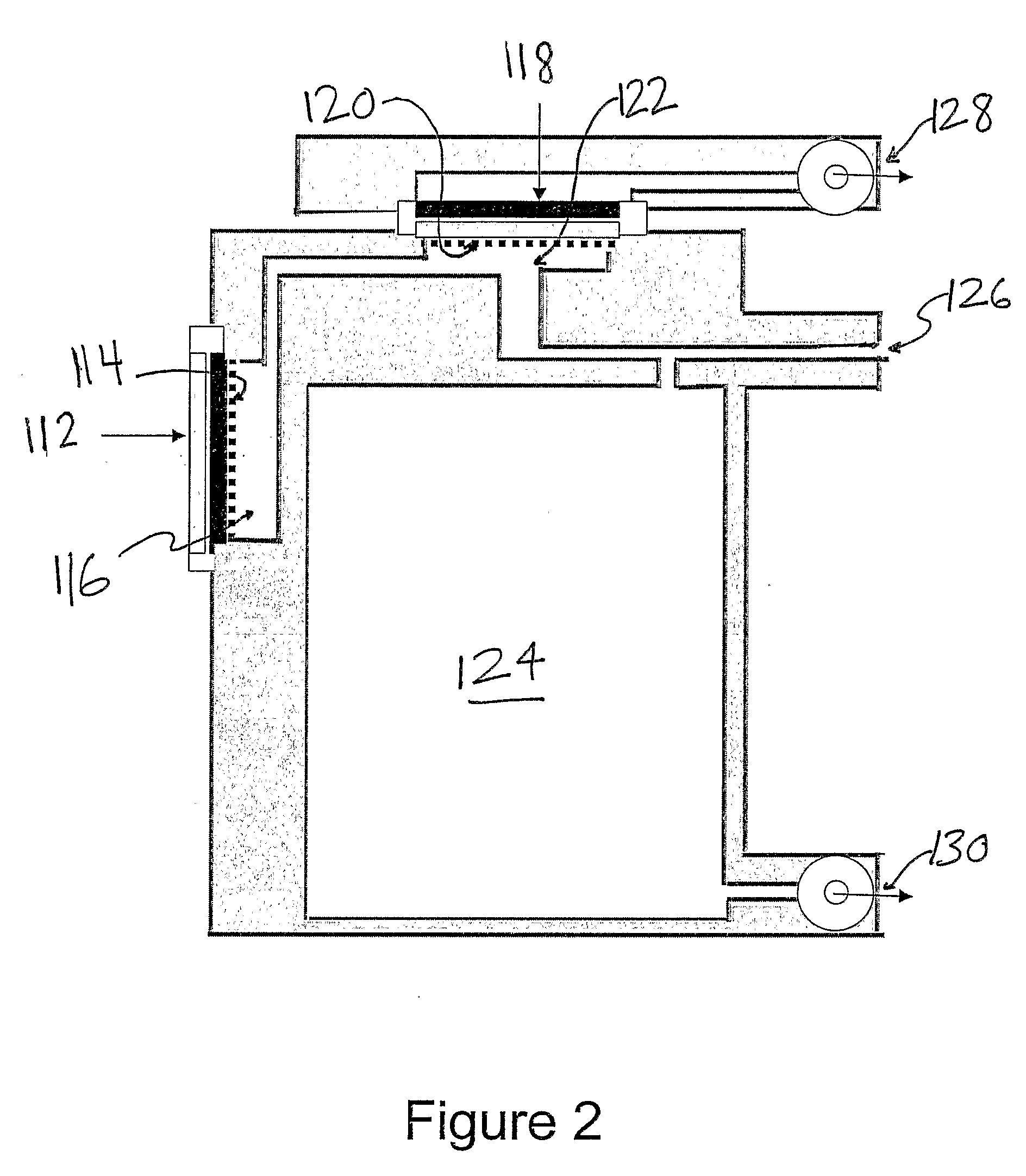Novel portable electrochemical devices for dual action wound healing
- Summary
- Abstract
- Description
- Claims
- Application Information
AI Technical Summary
Benefits of technology
Problems solved by technology
Method used
Image
Examples
second embodiment
[0027]In a second embodiment as shown in FIG. 3, there is provided a device incorporating a single cell that removes exudates from the wound site using suction created by the device itself, and then generates oxygen which is delivered to bare wound, in an alternating fashion. An electrochemical cell as detailed above with associated power supply 40 is mounted on one of the walls of a hermetically sealed box 42. In an exemplary device, the box may be of approximately 30 ml capacity. The cell is sealed to the wall of the box such that an electrode of the cell is in contact with the sealed interior of the box. A gas permeable barrier layer 44 (e.g., EPTFE, see dotted line in the figure above) is placed adjacent to the cell and separates the cell from the main interior volume of the box to prevent exudates from contaminating cell components. The box 42 is fitted with a cannula or conduit 46 such as a flexible tubing, which is sealed on one of the walls of the box below the barrier layer...
third embodiment
[0034]In a third embodiment, there is provided a dual action device including two cells and a snorkel or valve arrangement. This example uses first and second cells 70 and 72 and incorporates in addition a snorkel or valve type arrangement to prevent interference of operation of the first cell from the second cell and vice versa. First and second cells 70 and 72 are housed in first and second sealed boxes 74 and 76. The wound site 78 is covered with a wound dressing patch that forms an occlusive seal 80 that at least substantially prevents air from the atmosphere from contacting the wound. Cannulas 82 and 84 connecting the boxes 74 and 76 with the wound are provided. Cells 70 and 72 are configured such that first cell 70 is configured to produce oxygen within the box 74, while second cell 72 is configured to consume oxygen from the box 76. If first cell 70 is turned on, oxygen will be produced within the box 74 and the partial pressure of oxygen will increase therein. Pressurization...
PUM
 Login to View More
Login to View More Abstract
Description
Claims
Application Information
 Login to View More
Login to View More - R&D
- Intellectual Property
- Life Sciences
- Materials
- Tech Scout
- Unparalleled Data Quality
- Higher Quality Content
- 60% Fewer Hallucinations
Browse by: Latest US Patents, China's latest patents, Technical Efficacy Thesaurus, Application Domain, Technology Topic, Popular Technical Reports.
© 2025 PatSnap. All rights reserved.Legal|Privacy policy|Modern Slavery Act Transparency Statement|Sitemap|About US| Contact US: help@patsnap.com



